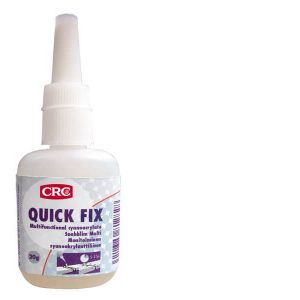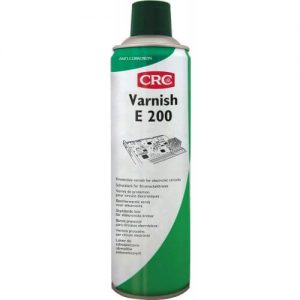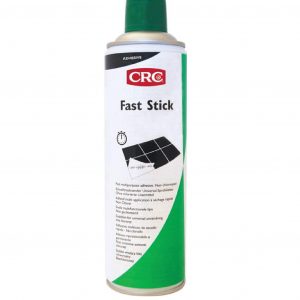Description
GENERAL DESCRIPTION
A quick drying developer, for the non-destructive testing of surfaces and structures. Many cracks in engineering materials can be deep in spite of having a very small opening width on the surface and can cause very serious defects. By normal visual inspection such cracks may be very difficult to detect, but penetrant flaw detection is an extension of the visual inspection method. The control is carried out using 3 products: Crick 110 (cleaner), Crick 120 (penetrant) and Crick 130 (developer). Crick 130 is a dispersion of a white powder in a fast evaporating solvent.
FEATURES
- The check can be carried out with ready-to-use
- It produces results in a speedy and easy
- An economical technology with no need for expensive and advanced
- A sensitive and reliable test
- Widely applicable, regardless the nature of the materials and shape of the
- The aerosol uses a hydrocarbon propellant for controlled
- Halogen content tested according to ASME Section V, art
APPLICATIONS
Non-destructive inspection of materials, parts, assemblies, equipment, surfaces or structures:
- Cracks, lack of fusion and open cavities in welded
- Cracks and cavities caused by metal fatigue and cutting
- Check of porosity or leaks in pipes, tanks, boilers, heat
- Discontinuities, laps, folds and cracks in castings, forgings and
DIRECTIONS
Do not use at ambient temperatures below 10’C.
- In liquid penetrant inspections, the test object or material is coated with a visible dye solution. The excess dye is removed from the surface and a developer is then applied. The developer acts like a blotter and draws penetrant out of the imperfections of the surface. With visible dyes, the vivid color contrast between the penetrant and the developer makes the ‘bleed-out’ easy to
- Cleaning of the surface
The surface to be checked must be clean, degreased and dry. All soil, like rust, oil, grease, paint etc, which can mask the imperfections, must be removed. Finish the cleaning by spraying Crick 110 generously. If possible wipe with an absorbent cloth and allow drying thoroughly.
- Penetrant application
Shake the can of Crick 120 prior to use. Spray the penetrant in a light, even film on the surface, wetting all areas to be controlled. Allow to drain for 10 to 20 minutes.
- Excess penetrant removal
Remove excess of penetrant by wiping the surface using a lint-free cloth. Apply water (Crick 120 is water washable) until all visible, coloured traces are removed. Care must be taken that only disturbing penetrant on the surface is removed. Dry properly.
- Development
Shake the can of Crick 130 thoroughly prior to use. Spray a light, homogeneous coat of developer from a distance of about 20 cm. Avoid any excess developer to avoid masking the finest flaws. Allow to develop for at least 7 minutes so that imperfections are visible.
- Visual inspection of defects
As time passes, the defects will appear as red spots or lines on a white background. The speed of appearance, the shape and dimensions can give information about the nature of the defects. If necessary, post-clean the controlled surface and protect against corrosion with one of CRC’s corrosion protection products.
A safety data sheet (MSDS) according EU-directive 93/112 is available for all CRC products.
TYPICAL PRODUCT DATA (without propellant)
Appearance : powder dispersed in a solvent blend
Color : white
Odor : solvent
Application temperature : > 10°C
Specific gravity (@ 20°C) : 0,885
Boiling range (solvent) : 40 – 85°C
Flash point liquid : < 0°C
Auto-ignition temperature : > 200°C
Solubility in water : not soluble
PACKAGING
aerosol : 12 x 500 ml
All statements in this publication are based on service experience and/or laboratory testing. Because of the wide variety of equipment and conditions and the unpredictable human factors involved, we recommend that our products be tested on-the-job prior to use. All information is given in good faith but without warranty neither expressed nor implied.
This Technical Data Sheet may already have been revised at this moment for reason such as legislation, availability of components and newly acquired experiences. The latest and only valid version of this Technical Data Sheet will be sent to you upon simple request or can be found on our website: www.crcind.com.
We recommend you to register on this website for this product so you will be able to receive any future updated version automatically.






